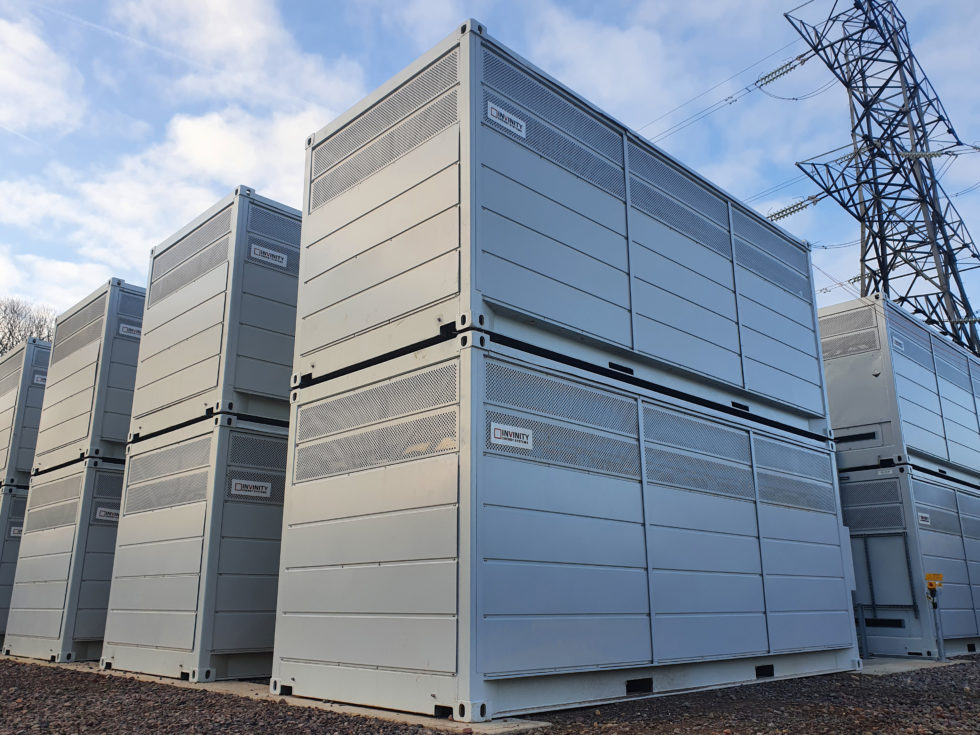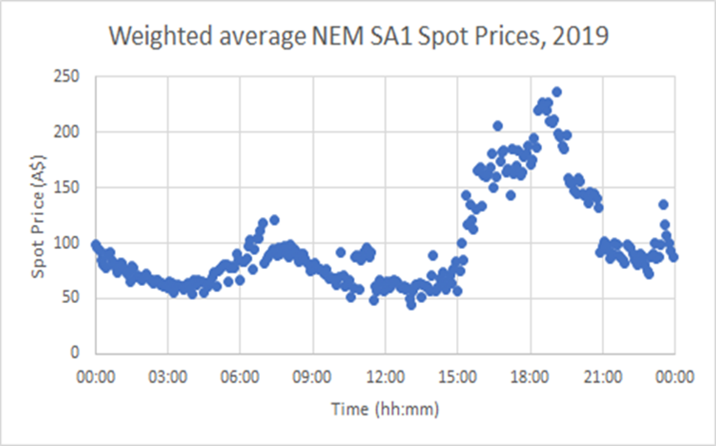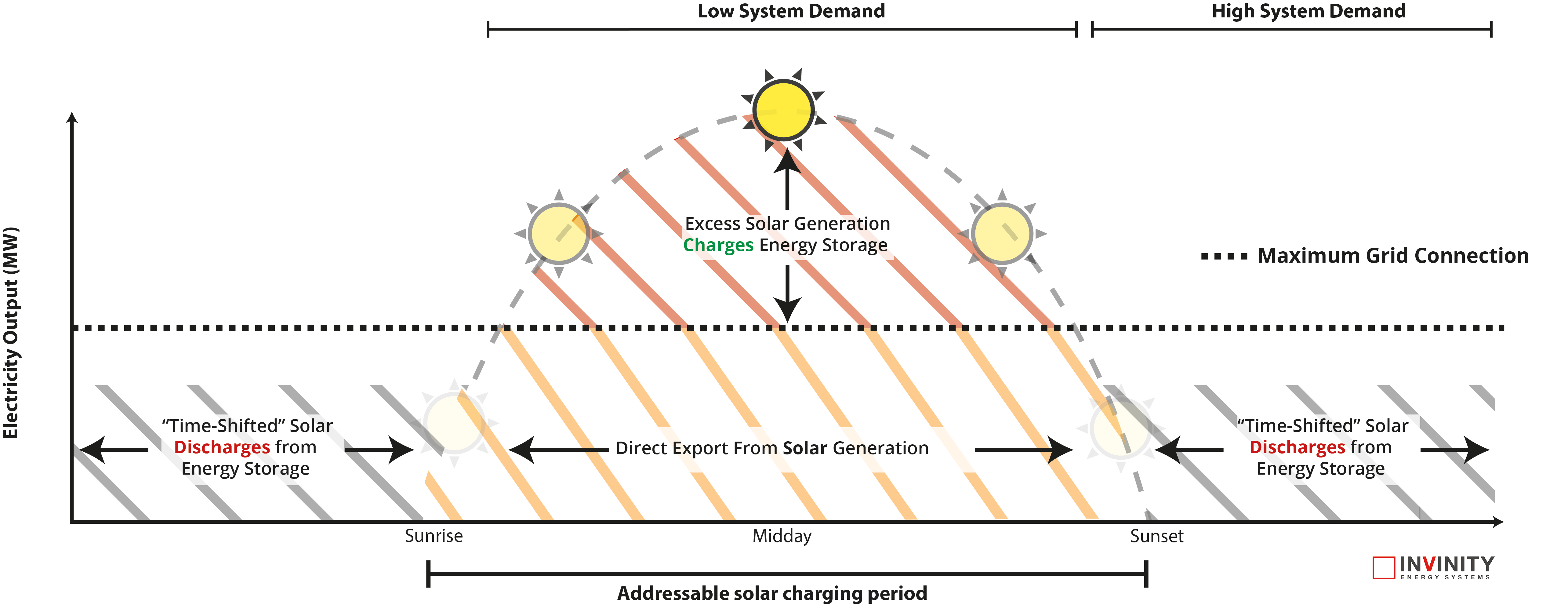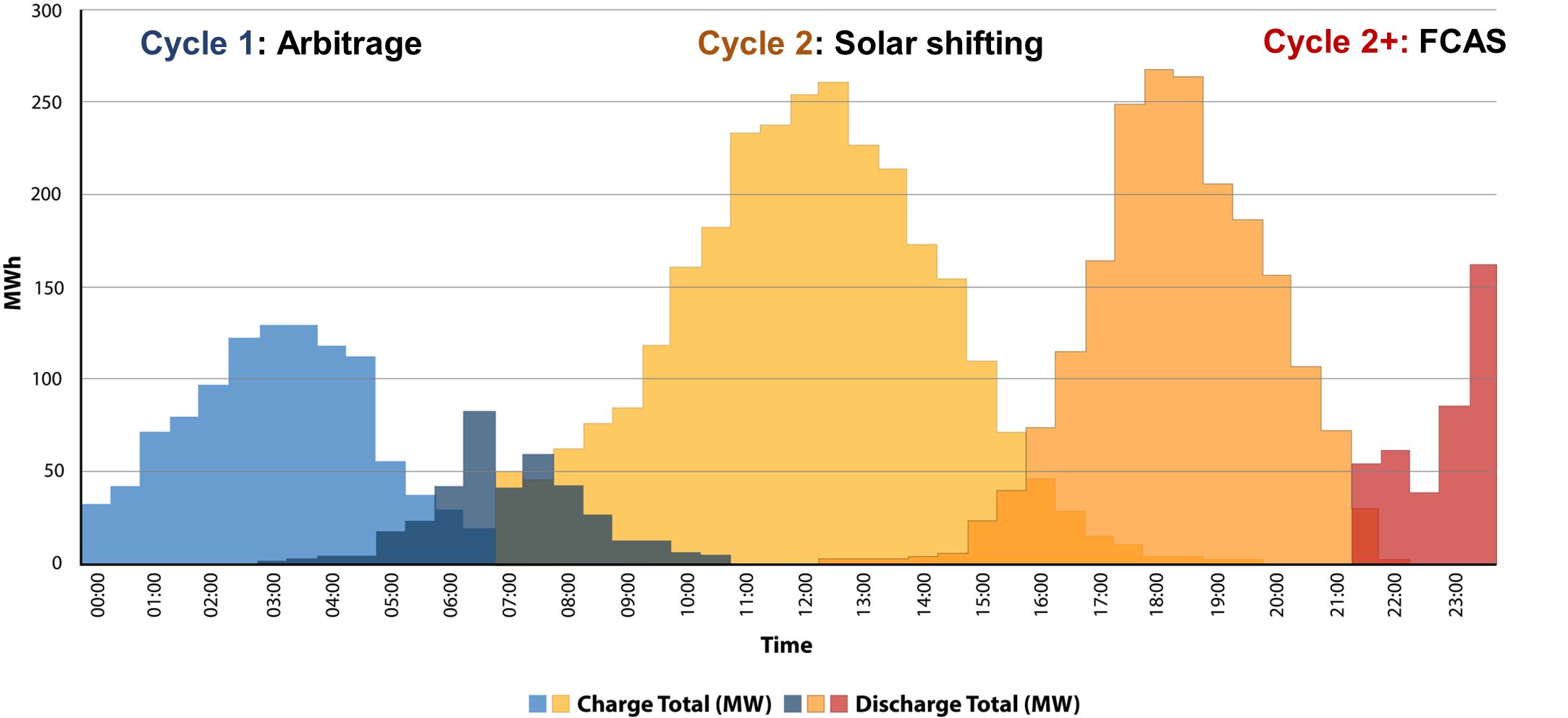Just creating a new thread to share info on developments in Vanadium Redox Flow Batteries and various new VRFB storage projects around the globe.
********************************************************************************************
Published yesterday, British VRFB storage company Invinity announces a new VRFB project in England. I have also attached some details of a Invinivity VRFB storage project in Australia.
Invinity moves to 30-50MWh deployment sizes with UK project, targets 100MWh+ by 2025
ByCameron Murray
April 12, 2023
Invinity’s system at the Energy Superhub Oxford hybrid project, UK. Image: Invinity Energy Systems.
Invinity Energy Systems will deploy a partially grant-funded 7MW/30MWh vanadium redox flow battery (VRFB) system in the UK as the company scales up its project sizes.
The company has been awarded £11 million (US$13.6 million) by the Department for Energy Security and Net Zero (DESNZ) to deploy the 4.3-hour project at a node on the transmission network, run by National Grid.
It will provide a ‘broad range of services to the grid’, and the funding came from Phase 2 of the Longer Duration Energy Storage (LDES) Demonstration Competition.
The project is Invinity’s largest to-date, taking that title from – and doubling the size of – a recent 15MWh order from Taiwan, and will be the largest grid-scale battery system ever manufactured in the UK and one of the largest in the world, Invinity claimed. It didn’t give a targeted commercial operation date (COD).
It is also claimed the project would be the largest long duration battery asset connected to the UK grid, though this may be a technicality. As Energy-Storage.news recently reported in response to a similar claim by other firms, four-hour-plus projects of 30MWh or larger are already online with more coming in 2023 and 2024.
The project marks the start of the VRFB company more broadly scaling up its project sizes from the high single-digit megawatt-hours today to the 30-50MWh range for the next few years with the potential for over 100MWh in 2025, as explained by VP business development Matthew Walz in an interview at Energy Storage Summit USA last month. The interview was prior to today’s UK grant and project announcement, and was mostly focused on the US market.
“Invinity already has three substantial projects coming online this year. The CEC-funded Viejas Enterprise microgrid project in California at 10 MWh, the Yadlamalka Energy project in Australia is 8 MWh and the Chappice Lake Project by Elemental Energy in Canada at 8.4 MWh. The last two being solar plus storage projects,” Walz said.
“We have talked to people about three-digit MWh sized projects which could be coming online from 2025 onwards but between now and then we expect to be primarily deploying projects in the 30-50MWh range.”
He added that Invinity’s next generation product would deliver larger projects at a higher performance and lower cost with today’s mainly optimised at the shipping container level. The company has “pretty clear pricing and specifications on what that is for 2025 and beyond” he said in response to a question about the flow battery sector’s lack thereof, according to some developers.
Walz also pointed to similar grant funding opportunities for Long Duration Energy Storage (LDES) projects in the US, as well as the country’s investment tax credit (ITC). The recent tailwinds in the US mean Invinity expects the US will be one of if not the largest market for the company.
“The US’ Department of Energy is in the midst of awarding US$330 million in grant funding for non-lithium long duration energy storage projects. Award notices are expected to be announced in Summer 2023. We believe Invinity’s storage solutions are an excellent fit for the program’s requirements and objectives.”
****************************************************************************************
Yadlamalka Energy
Australia’s first dispatchable solar power plant
Invinity is creating Australia’s first dispatchable solar power plant with an 8 MWh Vanadium Flow Battery (VFB), coupled with a 6MWp solar array. Find out more in the case study below.
Yadlamalka, South Australia will play host to one of the world’s largest solar-powered vanadium flow batteries (VFB) as part of an innovative $20m AUD project which will see an 8 MWh Invinity VFB combined with 6 MWp of solar panels to unlock low-cost, low-emission energy for the Australian Grid, producing approximately 10 GWh of dispatchable solar power each year.
The Yadlamalka Energy Project is the brainchild of South Australian entrepreneur and landowner, Andrew Doman and is being developed by the Yadlamalka Energy Trust.
Located in rural South Australia, the project nestles near the Flinders Ranges, in the Australian Outback.
Accelerating the Australian Energy Transition
Australia’s rapid uptake of renewable energy in recent years has driven the need for investment in flexible energy storage technologies to manage the variable output from those generation sources. The Yadlamalka Energy project provides a glimpse into the future of electricity grids in Australia and around the world. It has been supported by ARENA, the Australian Renewable Energy Agency, with a significant grant of $5.7m AUD.
Wholesale energy pricing in South Australia, like other markets which have a high penetration of renewables, has a distinctive shape characterised by low (even negative) energy prices in the middle of the day, with two distinct price spikes occurring around sunrise and sunset.
Figure: Weighted average NEM prices in South Australia.
This characteristic shape is caused by large amounts of low-cost solar power coming online during daylight hours creating oversupply in the market. When the sun goes down, this low-cost capacity drops off rapidly, leading to undersupply whilst conventional generation ramps up to fill the shortfall. Due to its distinctive shape, this market behaviour is often referred to as the solar ‘duck’ curve.
BLOG ARTICLE / DEMAND CHARGES IN AUSTRALIAN C&I
De-risking Utility-Scale Solar Projects with Flow Batteries
The solar duck curve raises an important point for Solar developers and project owners and is a key motivation for the Yadlamalka Energy Project. Solar-only projects can only output during daylight hours and are therefore exposed to risk from lower prices as their revenues are cannibalised by other solar-only projects in the area exporting power at the same time.
Flow batteries provide the answer to overcoming this risk for developers and asset owners. By storing energy when market prices are low during the day, and discharging into the evening and morning peaks, asset owners can maximise their returns and derisk revenues relative to solar-only projects.
‘Stacking’ Cycles for Maximum Project Returns
As flow batteries do not suffer from degradation like lithium-ion technology, they can be used constantly throughout the day, charging and discharging for a range of services. The Yadlamalka Energy project will utilise the flow battery to perform 3 different revenue-producing services.
These multiple cycles can be ‘stacked’ together throughout the day to provide maximum flexibility and maximum return for the project owners. The flow battery operating philosophy is demonstrated below.
This operating strategy maximises throughput on the flow battery, which is charging and discharging almost constantly over any given 24 hours. Returns are generated from 3 distinct applications:
Morning price arbitrage – storing low-cost energy from the grid overnight, discharging into the morning price peak.
Solar shifting – storing excess solar generation during the daytime when prevailing market prices are low and discharging into the evening price peak.
Frequency Control Ancillary Services (FCAS) – performing frequency control services for the local grid
- Forums
- ASX - By Stock
- SRN
- VRFB Projects & News
SRN
surefire resources nl
Add to My Watchlist
0.00%
 !
0.2¢
!
0.2¢
VRFB Projects & News
Featured News
Add to My Watchlist
What is My Watchlist?
A personalised tool to help users track selected stocks. Delivering real-time notifications on price updates, announcements, and performance stats on each to help make informed investment decisions.
 (20min delay) (20min delay)
|
|||||
|
Last
0.2¢ |
Change
0.000(0.00%) |
Mkt cap ! $5.860M | |||
| Open | High | Low | Value | Volume |
| 0.2¢ | 0.2¢ | 0.2¢ | $9.432K | 5.956M |
Buyers (Bids)
| No. | Vol. | Price($) |
|---|---|---|
| 131 | 249686281 | 0.1¢ |
Sellers (Offers)
| Price($) | Vol. | No. |
|---|---|---|
| 0.2¢ | 130700906 | 75 |
View Market Depth
| No. | Vol. | Price($) |
|---|---|---|
| 131 | 249686281 | 0.001 |
| 0 | 0 | 0.000 |
| 0 | 0 | 0.000 |
| 0 | 0 | 0.000 |
| 0 | 0 | 0.000 |
| Price($) | Vol. | No. |
|---|---|---|
| 0.002 | 130700906 | 75 |
| 0.003 | 39787052 | 19 |
| 0.004 | 21538069 | 4 |
| 0.005 | 4885000 | 5 |
| 0.006 | 4516666 | 5 |
| Last trade - 15.58pm 18/09/2025 (20 minute delay) ? |
Featured News
| SRN (ASX) Chart |








